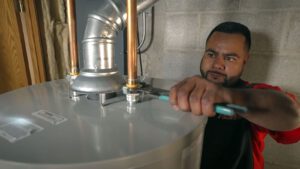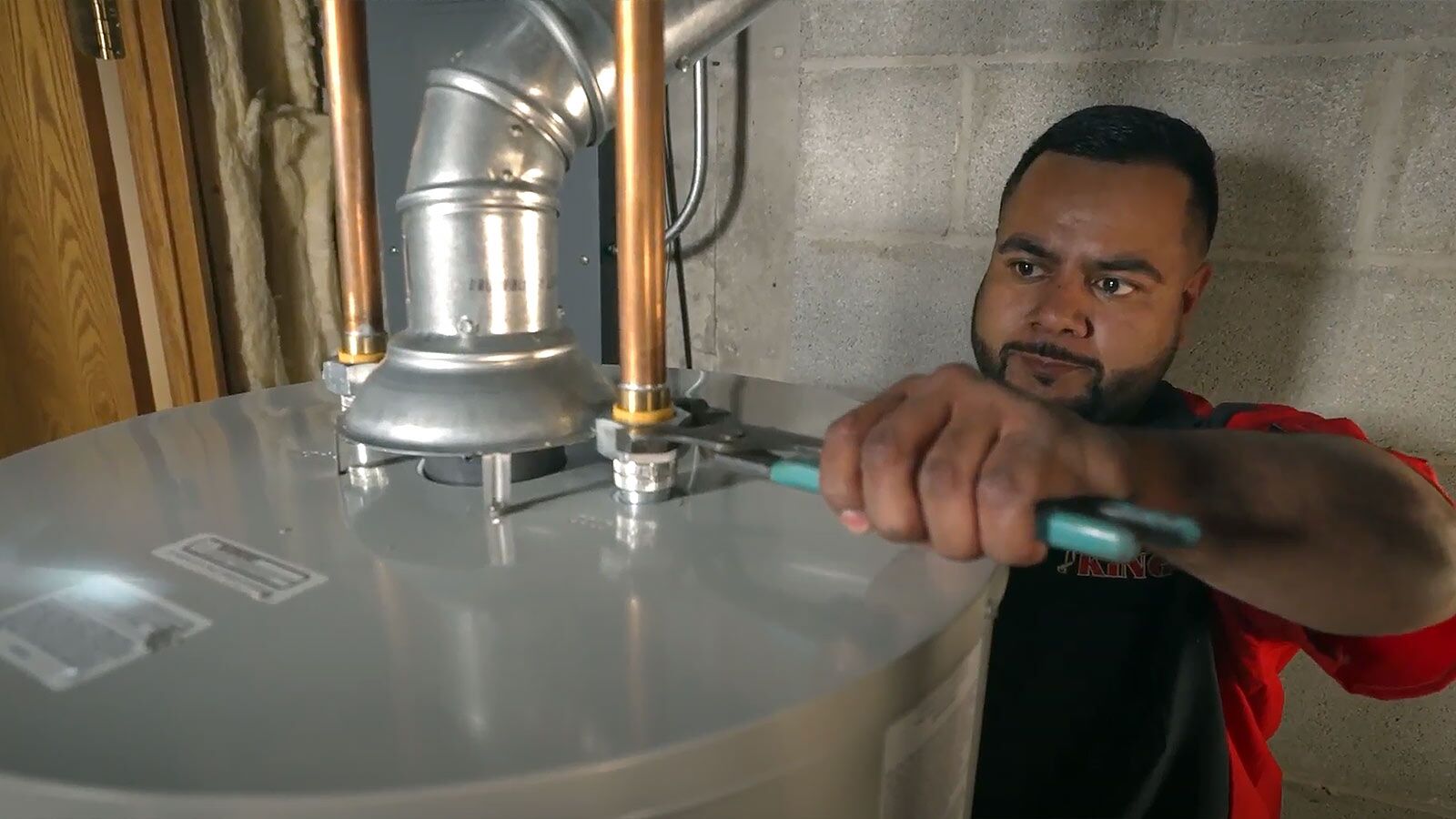A water heater depends on a variety of parts to function properly. The unit can be powered by natural gas, liquid propane, or electricity.
Leaks are common problems, and minor leaks should be repaired as soon as possible. Larger leaks are a major problem and may not be repairable. Visit Website to learn more.
Fluctuating hot water temperatures are another sign that it’s time to replace the unit.
Water heaters are an integral part of a home’s plumbing system. They are responsible for heating incoming cold water so that dishes can be washed, clothes can be cleaned, and showers or tubs can be used. There are several types of water heaters available to homeowners, with tank-type units being the most popular. Tank-style water heaters are large metal cylinders that are usually kept tucked away in utility rooms or basements. They come in various sizes, from 20 to 80 gallons, and can be powered by electricity, natural gas, or propane. Water enters the tank via a dip tube, and from there it is heated by an electrical heating element or a natural gas burner. Once the desired temperature is reached, the heating mechanism turns off.
When homeowners encounter problems with their water heater, it’s important to recognize that there are numerous causes. Some problems may be minor and easy to repair, while others could require an entirely new unit. For example, if your water heater makes strange noises, it’s possible that a buildup of sediment or mineral deposits has formed on the heating element or inside the tank. In this case, it would be best to call in a professional to drain and flush the water heater.
In general, routine maintenance can greatly prolong the life of your hot water heater. For tank-style models, this includes regularly cleaning the pressure relief valve and anode rod. It is also recommended to drain and flush the tank at least once a year, which can eliminate accumulated sediment and minerals and help increase efficiency.
Another type of water heater that is gaining popularity with consumers is the tankless model. This option promises significant energy cost savings over the long term by heating water only as it is needed. This eliminates the need to store unused hot water, which reduces energy costs and the environmental impact. It’s also important to note that, although the initial investment may be lower, tankless models can actually cost more to operate over time than conventional tanks. For this reason, it’s important to calculate your energy costs before making the switch.
Tank-type water heaters
The most common water heater is a tank-type unit. It consists of a steel shell that contains a gas-powered burner and a water storage tank. A sacrificial anode rod made of magnesium or aluminum is suspended inside the tank to draw out rust-causing ions. This prevents the water heater tank from rusting, but eventually it will wear out and need to be replaced. The water heater has a pressure relief valve that prevents overheating and protects your home from flood damage.
Water enters the tank through a dip tube at the top of the unit, and the tank is heated by the burner. Its bottom is lined with a glass layer to reduce corrosion. The water is then pumped through the hot water outlet pipes and into appliances, tubs, sinks, and showers in your home.
There is typically a water shut-off on the supply line to the heater that allows you to stop the flow of water to the tank if you need to drain the tank for maintenance or repair. Tank-type units also have a drain valve near the base that allows you to remove sediment from the bottom of the tank.
If you notice lukewarm or cold water coming from your hot water outlet, that may indicate the unit is unable to keep up with demand and needs to be replaced. Other signs of a faulty water heater include rumbling or popping noises that are caused by air pockets as the water is heating. A leaking water heater is a disaster waiting to happen, so it’s crucial that you have it replaced immediately.
If you’re thinking of installing a new water heater, consider a tankless model that requires less maintenance. These models work well in many homes, and they’re especially suited for urban areas where space is limited. In addition, there are also solar-powered models that use roof-mounted panels to harness free energy to heat your home’s water. While these systems can cost more up front, they provide long-term energy savings and are a green alternative to traditional gas or electric heaters.
Gas water heaters
With gas water heaters, your hot water is heated with natural gas. They also have a large tank where the gas is stored until you need it to heat your water. The gas is burned by a burner inside the tank to warm the water. This type of water heater usually costs more upfront than an electric one but can cost less to run in the long term.
To determine what kind of water heater you have, remove the access panel on the side and look for a pipe that’s fitted to the top of your unit. If it’s black, that’s a gas pipe, which indicates that your heater is gas-powered. It’s important to locate this pipe because if it’s ever shut off, the water heater won’t work.
A gas water heater will also have a dip tube on the bottom of the tank to push cold water into the top of the unit so it can be heated by the burner. It will then flow through the thermostat and out of the pipe at the top. You can usually find the dip tube at the top of the water heater on the left-hand side.
The hot water discharge pipe at the top of the unit has a temperature and pressure relief valve on it that works like a radiator cap on your car. This valve prevents excessive temperature and pressure from building up in the tank, which could potentially rupture it or damage your home. It’s a good idea to test this valve by cooling the water, turning off the gas pilot light, and opening the valve.
Gas tanks can build sediment at the bottom over time. If you aren’t regularly draining and flushing your tank, this can cause problems and shorten the life of your water heater. A professional technician can help you do this easily and safely.
Whether you have a tank-type or a gas water heater, it’s important to keep it well-maintained so that it lasts for many years and is reliable enough to meet your family’s needs. A home warranty plan can protect your water heater against some of the common problems that can occur from wear and tear.
Electric water heaters
Electric water heaters heat up the water in their tanks with a series of large coils extending inside the tank. In comparison, natural gas water heaters use a flame from a burner to heat the water. Regardless of the power source, both types use similar parts and operate in similar ways.
If your electric water heater is unable to produce hot water, first check to see that the circuit breaker hasn’t been tripped. Then, switch the breaker back on. If the water heater still doesn’t produce hot water, one or both of its heating elements might have failed and need to be replaced.
Before attempting DIY water heater repairs, shut off the power to the water heater at the service panel with a noncontact voltage tester or screwdriver. Next, remove the insulation and access panels from each of the water heater’s heating elements. Remove the plastic safety guard and test each element’s heat setting; if they are both at the same temperature, the heating elements might be burned out and need to be replaced.
If the water heater is producing hot water but not enough for your household’s demands, it may be sized improperly or have another problem. In this case, a qualified plumber should evaluate your home’s water usage and install an appropriately sized water heater.
If you want to save energy and money, try turning down the temperature on your water heater before you go away for a few days or while you’re sleeping. This also helps the environment by reducing carbon emissions from fossil fuels. In addition, installing a high-efficiency model and using low-flow showerheads and washing machines will lower your water heating bills. Seek out a plumbing contractor who will obtain a local permit if necessary and understands your home’s building codes and requirements. These factors will ensure the safe and proper installation of your new water heater. Additionally, regular water heater maintenance is essential to minimizing costs and prolonging the life of your unit. Check the owner’s manual for specific recommendations. For example, flushing a water heater can help prevent mineral buildup that causes the unit to fail prematurely.

